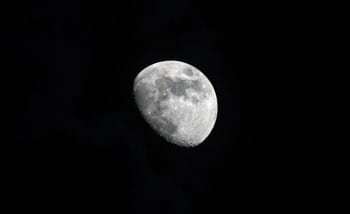Apollo 11 anniversary puts focus on historic achievements and returning to the moon, says Baker Institute's Abbey

With the 50th anniversary of the Apollo 11 landing on July 20, a new paper by George Abbey, a senior fellow in space policy at Rice University's Baker Institute for Public Policy and the former director of NASA's Johnson Space Center, traces America's race to the moon and describes what it took to be the first there.
"50th Anniversary of Apollo 11: America's Race to the Moon" details the dramatic events and ingenious ideas set into motion in the U.S. by the Soviets' launch of Sputnik and subsequent launch of Yuri Gagarin, the first human in space. Abbey also laments the current state of U.S. space policy.
"In December 2019 it will be 47 years, almost half a century, since a human last stepped on the lunar surface," Abbey wrote. "It will be eight years this July since the space shuttle program was brought to a close and the United States last carried its astronauts to orbit. We have yet to again fly a spacecraft successfully carrying Americans to orbit, let alone back to the moon."
As one of the most influential figures in NASA's history, Abbey served a key role in shaping the Apollo moon missions and the space shuttle program.
"In October 1957, the Soviet Union startled the world by launching the first man-made satellite into orbit, Sputnik," Abbey wrote. "This event created great concern in the United States and the Western world, as it demonstrated the Soviets had unexpectedly advanced their technological capabilities—technologies that could, in turn, lead to very capable intercontinental ballistic missiles. The Soviets subsequently achieved further firsts in space, launching another satellite with a passenger, a dog called Laika, as a first step toward launching humans into space. The United States suddenly found itself in a space race in which it was behind and trying to catch up."
Among the most notable of these events was President John F. Kennedy's address to a joint session of Congress on May 25, 1961, when he challenged the nation to land a man on the moon before the end of the decade, Abbey said. "Subsequently, the U.S. successfully completed the Mercury and Gemini programs and worked relentlessly and tirelessly to enable astronaut Neil Armstrong to step on the lunar surface on July 21, 1969, eight years after Kennedy's speech," he wrote.
Abbey said the 10 manned Gemini flights in 1965 and 1966 provided the essential preparation and experience needed for Apollo. The first manned flight, Gemini 3, launched in March 1965 and the last flew in November 1966.
During Gemini, preparations were underway for the first Apollo mission. The first manned Apollo flight was to be launched in February 1967, approximately three months after the last Gemini flight, with a crew of commander Virgil "Gus" Grissom, command module pilot Ed White and lunar module pilot Roger Chaffee.
A dress rehearsal was held approximately one month before the planned launch of Apollo 1. On Jan. 27, 1967, a countdown demonstration test was held with the crew in the spacecraft and the hatch closed. Nylon-based Velcro used to secure items in zero gravity and other flammable materials were also inside. "There was a spark, probably caused by frayed wiring, resulting in a fire in the spacecraft," Abbey wrote. "The crew frantically tried to open the inward-opening hatch but it proved to be too difficult and all three crewmen subsequently lost their lives through asphyxiation.
"The tragic loss during the launch test was a major setback for the Apollo program and Kennedy's goal of a successful landing on the moon; that objective now seemed even more unattainable," Abbey wrote. "In order to proceed, the cause of the fire had to be determined and corrective actions implemented. With an atmosphere of 100% oxygen inside the cabin, new fireproof material had to be developed, tested and fabricated. A new outward, quick-opening hatch had to be designed and tested. The accident also led to a further evaluation of the spacecraft's basic design and systems, which led to additional design and reliability improvements."
Of NASA's plans to return to the moon, he concluded, "It will require the commitment of the necessary funds and resources and a major redirection of NASA's ongoing activities. … And it should be a cooperative effort, building on the foundation of the International Space Station partnerships, in order to achieve success."
Provided by Rice University





















